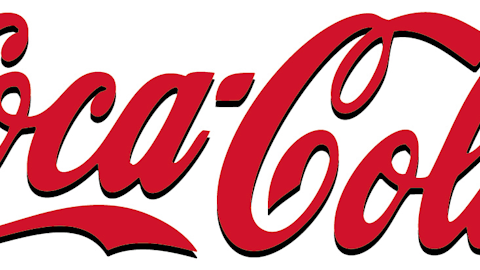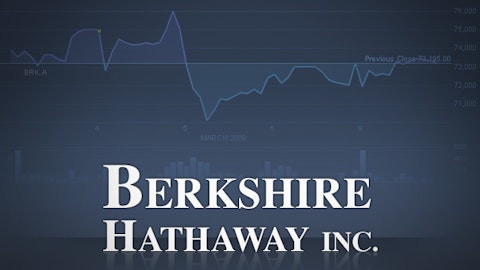
Share repurchasing
Coke repurchased 3% of its shares outstanding over the past two years; this is modest, to say the least. As time marches forward, Coke will continue to use the cash that has recently been tied up in purchasing bottlers to repurchase shares. This will add to its earnings over time and give each investor a slightly bigger stake in The Coca-Cola Company (NYSE:KO)’s overall profit.
The number one Dow component to execute an accretive share repurchase in 2012 was Travelers Companies Inc (NYSE:TRV). Travelers Companies Inc (NYSE:TRV) has repurchased 13.1% of its shares outstanding since 2013. This boring insurer has been able to realize an actuarial profit, even through Super Storm Sandy. Travelers Companies Inc (NYSE:TRV) could continue to see its earnings grow by double digits by maintaining a growth rate of 5% organically while repurchasing shares at the same percentage each year. The biggest risk to the company is that people catch on that it’s a great investment and boost the share price.
The Coca-Cola Company (NYSE:KO) has been increasing its long-term debt as it has swallowed up its bottlers and repurchased shares. As long as interest rates are lower than the dividend amount of 2.5%, borrowing money to fund share repurchases is actually accretive to Coca-Cola’s overall cash position on a yearly basis.
The risk to this is that if The Coca-Cola Company (NYSE:KO) borrows too much money, the company’s credit rating could be lowered, leading to higher interest rates. The other risk is that as overall market interest rates start rising, it will lead to higher borrowing costs. Until that point, Coca-Cola can continue taking advantage of this market situation.
Cost cutting
Coca-Cola’s operating margins currently stand at 22.3%, up from the mid-teens in 2009. They will continue to climb as expenses are reduced and synergies realized. The Coca-Cola Company (NYSE:KO) is looking for synergies between the bottlers that it has recently purchased, which should continue to push gross margins up. Coca-Cola is looking to automate production and potentially merge bottling operations to increase efficiencies.
Global distribution
The Coca-Cola Company (NYSE:KO) has a robust sales and distribution network, and will continue to exploit this fact as it acquires bolt-on acquisitions of new beverages. Coke can take a beverage selling just thousands of units per month, and utilize its sales force to increase this by orders of magnitude overnight. This is exactly what PepsiCo, Inc. (NYSE:PEP) did with Starbucks Corporation (NASDAQ:SBUX)’ ready serve beverage joint venture.
PepsiCo, Inc. (NYSE:PEP) took Starbucks’ ready-serve from concept to a billion-dollar brand by leveraging its worldwide customer base, and distribution network. PepsiCo is Coca-Cola’s primary competitor and sports a similar dividend at 2.5%. PepsiCo spends roughly 55% of its earnings to fund the dividend and has operating margins of 14%.
PepsiCo, Inc. (NYSE:PEP)’s bottled water unit is another area example of a company ready to utilize it’s global distribution network to push growth. As having pure water becomes more of a concern to countries like China and India, we will see PepsiCo there ready to capture this growing market and profit handsomely.
The main difference between PepsiCo and Coca-Cola is that the cola industry is largely an oligopoly or duopoly in most markets and has better margins than PepsiCo’s snack-food business. This makes comparing PepsiCo and Coca-Cola slightly more difficult to do an apples-to-apples basis.
Foolish bottom line
The Coca-Cola Company (NYSE:KO) will continue to see top-line and bottom-line growth as it implements more bolt-on acquisitions and decreases its share count. As more and more countries see an increase in their middle class populations, Coca-Cola will be there to quench their thirst. Adding shares of Coca-Cola can add stability and growth to anybody’s portfolio for the foreseeable future.
The article Coke’s Recipe for Success originally appeared on Fool.com and is written by Wes Patoka.
Copyright © 1995 – 2013 The Motley Fool, LLC. All rights reserved. The Motley Fool has a disclosure policy.

